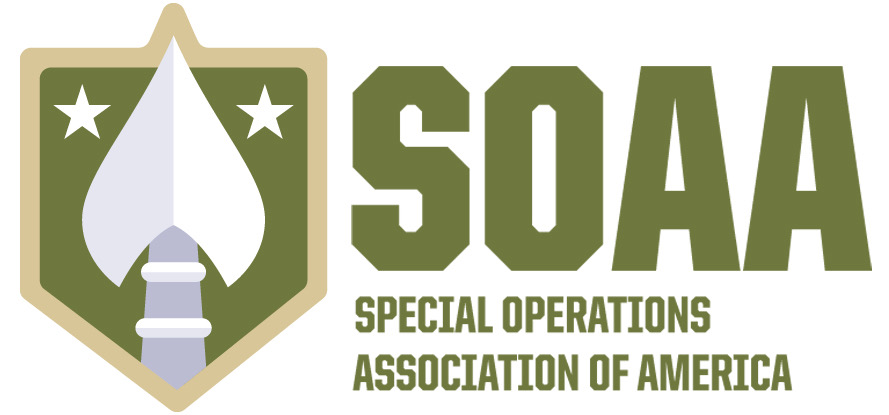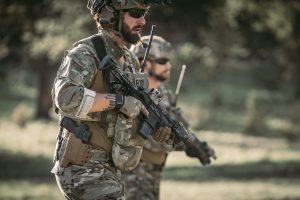Sometimes, the best solution to a problem is already in the palm of your hand.
In Ukraine, a handful of engineers found a way to protect their troops from Russian forces using technology that already existed. Using smartphone sensors, they built a nationwide drone-detection network linking thousands of cheap mobile phones into a real-time warning system. With nothing more than an app and a little ingenuity, they helped soldiers shoot down drones faster than systems costing millions could be fielded.
The entire system costs less than two Patriot missiles — and it worked.
That story captures an uncomfortable truth: The biggest obstacle to getting technology into warfighters’ hands quickly isn’t a lack of innovation. It’s culture.
Defense Secretary Pete Hegseth clearly recognizes the urgency. In a speech in November at the National War College, he called speed of delivery “our organizing principle:”
“If our warfighters die or our country loses because we took too long to get them what we needed, we have failed. It is that simple.”
For decades, the United States has led the world in defense research and development. Yet even as the commercial world races ahead with artificial intelligence, autonomy, and digital platforms, the Department of Defense (DoD) acquisition system often struggles to get proven capabilities to the front lines at the speed of conflict.
The bottleneck is rarely technological. Rather, it’s human. It’s how we think, what we reward, and how risk-averse habits embedded in acquisition culture end up slowing down progress.
The Culture of “No”
In the U.S., the set of rules determining how the federal government buys goods and services is known as the Federal Acquisition Regulation (FAR). At its best, the FAR ensures fairness, accountability, and stewardship of taxpayer dollars.
But over time, the FAR’s dense maze of processes and rigid procedures has created a mindset that prizes compliance over creativity. Contracting officers are trained to avoid mistakes, not to move boldly.
When seeking a new technology, DoD’s reflex has often been to default to a section of the FAR called Part 15, which requires lengthy procurement processes and competitive negotiations, and is intended for custom-built systems not available on the commercial market.
Less often do contracting officers ask whether the same need could be met using Part 12, the much simpler and faster commercial pathway to buy what already exists.
This cultural bias shapes everything that happens downstream. Prime contractors mirror the government’s caution, passing down the same complex clauses and compliance language to their subcontractors. Over time, the entire industrial base absorbs this risk-averse posture. The whole process slows down.
Decades ago, precisely to escape this rigidity, DoD introduced another pathway called Other Transaction Agreements (OTAs), to speed innovation by enabling flexible purchases outside of the FAR system. Nevertheless, the old culture crept back in. Many contracting officers began attaching traditional FAR clauses to OTAs, effectively turning fast, flexible tools into “FAR-lite” contracts that reintroduce the very friction they were meant to remove.
As Larry Allen, chief acquisition officer for the General Services Administration (GSA), observed, policy reform can only go so far:
“Even if we rewrite the rules, we’re not going to be ultimately successful unless we reform the culture.”
People Imitate People
Culture, at its core, is transmitted person to person. In the acquisition community, this means norms, templates, and comfort zones spread through mentorship and mobility. Many government contracting officers eventually move into private industry, joining prime- or mid-tier contractors. They bring with them the same cautious instincts and procedural habits that defined their government service.
Similarly, industry professionals who later join government tend to replicate the processes they’re used to navigating as vendors. The result is a circular ecosystem of shared caution, a mirror culture between the government and its industrial partners, each reinforcing the other’s conservatism.
This is not a criticism of the workforce; it’s an acknowledgement of human nature. People do what they are rewarded for. If performance is measured by error-free audits instead of rapid capability-fielding, compliance will always win over speed. Changing this equation means changing incentives and redefining success.
Putting Reform into Action
The good news is that Washington recognizes the problem. Hegseth, in his remarks on transforming DOD acquisition, laid out several priorities for the Pentagon:
- Standing up a new “Wartime Production Unit” led by a “deal team” to pursue faster negotiations
- Embedding contracting teams within program teams to shorten timelines to identify and acquire new technologies
- Asking Congress to reform rules on how DOD can move funds between accounts and programs
Starting in 2019, DoD began rolling out a new pathway called the Adaptive Acquisition Framework (AAF), which allows program managers to choose from multiple, tailored pathways ranging from rapid prototyping to urgent capability acquisition.
The FAR, too, is undergoing its first comprehensive simplification in decades, aiming to remove redundant language and clarify intent. Congress continues to expand OTA and commercial-buying authorities to make it easier for DoD to partner with nontraditional companies.
Yet these reforms, as valuable as they are, can only succeed if the workforce embraces them. A simpler rulebook won’t matter if people are still afraid to use it. History has shown that well-intentioned flexibilities often get reinterpreted through the old lens of control. For example, OTAs initially revolutionized how the DoD could engage tech startups, but within a few years, many offices layered back traditional oversight requirements. What began as a bridge to commercial agility was slowly reabsorbed by bureaucracy.
True change comes when leaders model and protect new behaviors. When senior officials explicitly tell their teams that taking smart risks is acceptable, even expected, they send a powerful signal. Leaders must highlight the importance of delivering solutions quickly through creative contracting that celebrates outcomes rather than paperwork perfection. This kind of “top cover” empowers innovation far more than any policy memo ever could.
Linking Policy to Human Performance
Regulation alone doesn’t shape the pace of innovation, people do. Contracting officers, program managers, and engineers are the connective tissue between invention and implementation. Training them to be fluent in both government processes and commercial innovation is essential.
The Defense Innovation Unit (DIU) was created to help the DoD adopt commercial technologies faster through a flexible award process that demonstrates how commercial solutions can quickly deliver capabilities to the warfighter. Under an initiative known as DIU 3.0, it is now focused on meeting the DoD’s most critical operational needs.
Building on that model, in 2022, DoD launched the Immersive Commercial Acquisition Program to train contracting officers in commercial-style practices such as negotiating with startups, buying Software as a Service (SaaS), and leveraging commercial, off-the-shelf technologies to build a more agile, innovation-ready acquisition workforce.
At the same time, we must revisit outdated control frameworks that unintentionally slow progress. The International Traffic in Arms Regulations (ITAR), for example, still treat many widely available technologies as sensitive munitions, even when equivalent or superior solutions are sold globally. While safeguarding truly sensitive innovations remains essential, the blanket classification of common technologies only isolates U.S. industry from the broader ecosystem.
Learning From the Battlefield
America’s challenge is not capability, but culture. We have the world’s most innovative companies, from aerospace giants to small startups developing AI-driven systems. What slows us is the time it takes for that innovation to move from contract to combat. Every day that technology sits in a proposal queue, a warfighter waits.
To close that gap, the U.S. defense enterprise must redefine its cultural DNA. Acquisition officials should start with the presumption that technology is commercial unless proven otherwise, flipping the traditional FAR Part 15 mindset on its head. Program offices must be empowered to take calculated risks and adapt as they learn. And industry must shed the reflex to mirror government’s caution, instead modeling transparency, agility, and collaboration.
Building a Culture of Speed and Trust
Changing culture is slow work, but it begins with trust. Leaders must trust their contracting officers to use discretion. Contracting officers must trust that leadership will support them when they act boldly and intelligently. Warfighters must trust that the system behind them is as adaptive as the battles they fight.
Recent reforms, from the FAR simplification to expanded OTA authorities, give us the legal tools to move faster. Now, we must pair those tools with a mindset that values speed, creativity, and mission outcomes over process. We need to support people in making innovative decisions, and as one acquisition officer said, “It’s okay to break out from the norm.”
Ultimately, it’s people, not policies, who deliver technology to the field. When those people feel empowered to innovate, the possibilities for our warfighters are limitless. By consciously cultivating a culture that prizes agility, smart risk-taking, and openness to commercial solutions, we position our warfighters to get the best tools in time to make a difference.
Commentary by SOAA Board Member Luis Avila.





